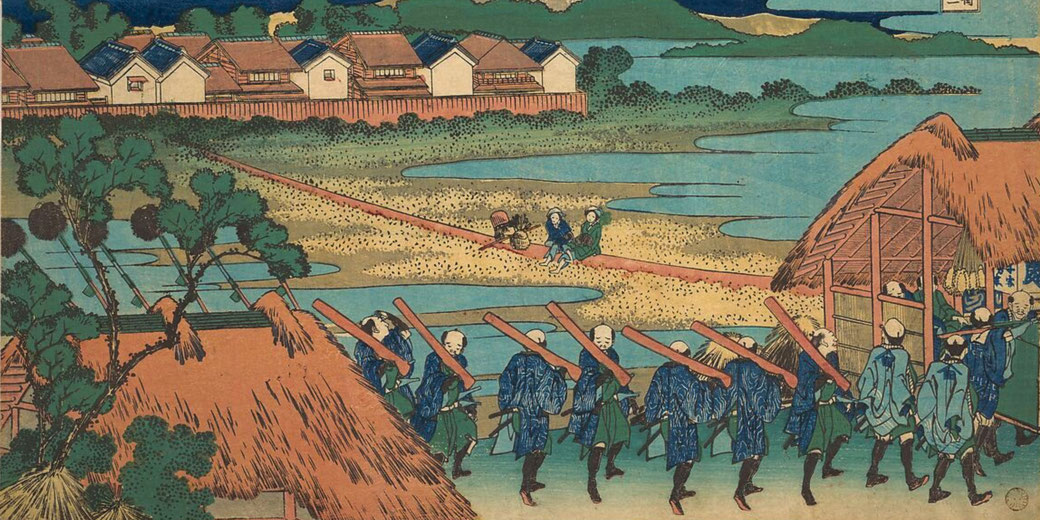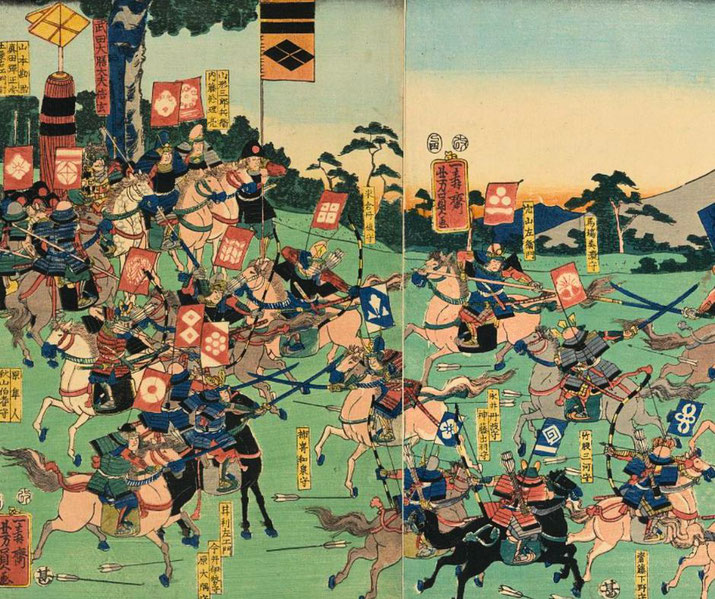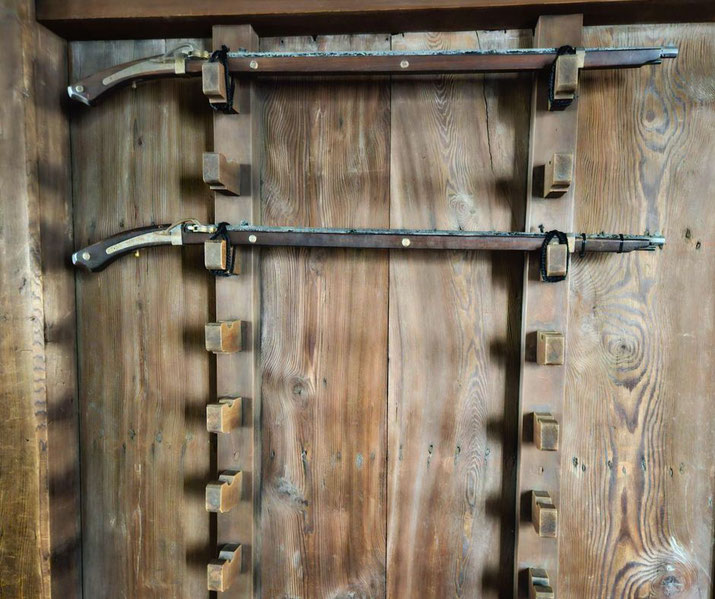The samurai and the musket: When European firearms were used in medieval Japanese warfare

The arrival of European firearms in sixteenth-century Japan introduced a foreign technology that changed centuries of local military tradition.
Warfare, which had relied on close-quarters combat combined with mounted archery and ritualised codes of honour, now encountered a weapon that could kill from a distance with minimal training.
Daimyōs who recognised the battlefield potential of firearms moved quickly to adopt and refine the new weapons, changing how war was fought across the islands.
Japan before European arrival
Japanese warfare relied on large numbers of ashigaru foot soldiers, who used spears and bows under the command of samurai officers.
These ashigaru, often drawn from the peasantry, required extensive training to master the bow, but firearms would soon reduce that barrier.
The elite warriors, in comparison, used their swords and composite bows as symbols of both status and skill.
Armourers crafted layered cuirasses and helmets from iron and lacquered leather that produced protection suited to the patterns of close combat and mounted fighting.
During the Sengoku period, which began around 1467, conditions favoured the rise of regional warlords.
With the collapse of central authority, dozens of competing daimyōs established strongholds, levied troops, and conducted near-constant campaigns.
Castles multiplied across key valleys and passes, and long sieges replaced the limited skirmishes of earlier centuries.
At the tactical level, commanders deployed formations based on experience that had been passed down through generations.
Pikemen stood in lines to maintain position, while cavalry launched swift attacks under cover of arrows and noise.
On the battlefield, orders travelled through drums, horns, and flags. Usually, military campaigns followed seasonal cycles, with terrain and harvests influencing supply and movement.
In every major conflict, the samurai reinforced their role as the top military class, which ritual and combat discipline had formed.

How European guns arrived in Japan
On the island of Tanegashima in 1543, Portuguese sailors introduced a matchlock firearm to the local daimyō.
Tanegashima Tokitaka, the lord of the island, acquired two weapons and tasked his retainers with learning how to reproduce them.
The arquebus, with its mechanical firing system and iron barrel, immediately attracted interest.
The task proved to be quite difficult, particularly the firing mechanism, but the Japanese artisans who examined the weapon possessed long-established skills in metalwork and engineering.
According to traditional accounts, a gunsmith named Yaita Kinbei Kiyosada managed to copy the matchlock’s internal mechanism, though his historical existence remains uncertain.
After this important technical advance in 1544, Japanese-made matchlocks began to appear in larger numbers.
By the 1560s, armourers in Sakai and Kunitomo produced thousands annually to meet demand.
The new weapons were soon called tanegashima, and were added to the weapons stores of nearby domains.
In the years that followed, southern trade routes brought more Portuguese and Spanish ships to Japanese ports.
Jesuit missionaries, including Francis Xavier, joined these voyages and engaged with several daimyōs.
In regions such as Kyushu, foreign trade supported the rapid spread of firearms, which now moved from curiosity to standard equipment.
As more domains adopted them, the balance of power continued to shift toward those who embraced gun warfare.

Rapid adoption and adaption of the new weapons
In many workshops located in Sakai, Kunitomo, and other industrial centres, Japanese artisans introduced small improvements to fit battlefield conditions, including protective firing covers, wooden stocks tailored to local fighting styles, and simplified loading mechanisms.
Among soldiers, standardised ammunition allowed for faster supply and consistent training.
At the Battle of Nagashino in 1575, Oda Nobunaga used a trained gun unit to defeat the feared cavalry of Takeda Katsuyori.
Positioned behind wooden barricades, rows of arquebusiers fired in carefully timed volleys, cutting down attackers before they could make contact.
Nobunaga employed a triple-line rotation method, which allowed each line to reload while the others fired.
As a result, military leaders across Japan began experimenting with their own formations and timing methods.
In response, tacticians integrated firearms into mixed infantry units. Pike-wielding ashigaru protected gunners as they reloaded, and officers drilled troops to maintain steady volleys.
From the rear of the formations, commanders used flags and horns to adjust movements and coordinate fire.
Some armourers experimented with more compact versions of the matchlock, though most weapons retained their original weight and length.
In castle defence, defenders fired from loopholes, delivering lethal force far beyond the walls.
During the Siege of Osaka (1614–1615), firearms contributed significantly to both field battles and siege tactics, though they were one element among many in the campaign that involved many coordinated elements.
The impact of firearms on traditional samurai warriors
Among the samurai, the increasing presence of firearms challenged long-established values and military roles.
Throughout previous generations, mounted combat and swordsmanship had defined the warrior class.
A skilled archer or swordsman could defeat multiple opponents and win prestige in the field.
However, with the arrival of firearms, that skill no longer guaranteed survival.
In most armies, foot soldiers who carried matchlocks required far less training than those who mastered the bow.
A well-placed shot could kill even a heavily armoured veteran from outside sword range.
Armourers tried to strengthen breastplates and helmets, but matchlock balls still punched through iron at short range.
Over time, many samurai began carrying firearms themselves, adopting the new weapon while retaining their traditional arms for ceremony and status.
Meanwhile, the nature of battlefield instruction began to change. Officers placed greater emphasis on gunnery drills, timing coordination, and use of firepower in battle.
Smoke and noise replaced ritual and rhythm and samurai duels, once expected and celebrated, became increasingly rare.
In larger battles, personal honour lost its former significance as commanders focused on the efficiency of group tactics and reliable results.
Why European weapons were banned in Japan
Under Tokugawa Ieyasu, who established his rule after the Battle of Sekigahara in 1600, Japan entered a period of strict order.
The new shogunate was determined to prevent further civil war and enacted policies that reduced the risk of armed rebellion.
Foreign contact became a primary concern, especially the influence of Christianity and the growing power of merchants tied to foreign trade.
Among the reforms, the restriction of firearms production ranked highly.
During the 1630s, the Tokugawa government formalised its policy of isolation, known as sakoku.
Foreign missionaries were expelled, and foreign ships faced tight limitations. The sakoku edicts began in 1635 and culminated in the 1639 ban on Portuguese ships entering Japan.
The shogunate closed most ports and restricted trade to approved merchants in places such as Dejima.
Alongside these measures, the state placed firearms under strict regulation.
Production slowed, and ownership required official permission. Workshops that had once mass-produced matchlocks shifted to making ceremonial arms and tools for peacetime needs.
Only Dutch and Chinese ships retained limited trading access under strict conditions.
In the years that followed, samurai academies and martial schools revived older traditions.
Instruction focused on swordsmanship, archery, and moral discipline rather than firearms.
Inside the government ranks of the Tokugawa system, innovation gave way to order.
The musket, which had once altered the outcome of critical battles, faded from military relevance and became a symbol of a past that no longer suited the new regime.
For more than two centuries, Japan avoided large-scale conflict and remained separate from European military developments.
Firearms had once been central to unification, yet they were later set aside to preserve social harmony.
When Commodore Perry’s fleet arrived in 1853, Japan faced the modern world with the weapons of a previous age.
The long absence of major military campaigns since the early 1600s had reduced real experience with large-scale gun battles, a weakness that soon became evident.
What do you need help with?
Download ready-to-use digital learning resources
Copyright © History Skills 2014-2025.
Contact via email
With the exception of links to external sites, some historical sources and extracts from specific publications, all content on this website is copyrighted by History Skills. This content may not be copied, republished or redistributed without written permission from the website creator. Please use the Contact page to obtain relevant permission.





